Please view the following code snippets:
int& sum(int& num1, int& num2) {
num1++;
num2++;
}
00000000 <_Z3sumRiS_>:
0: 55 push %ebp
1: 89 e5 mov %esp,%ebp
3: e8 fc ff ff ff call 4 <_Z3sumRiS_+0x4> // why here is a jump
8: 05 01 00 00 00 add $0x1,%eax
// why 0x8, my understanding is there are in total 3 parameters
// num2 -- 0xc(%ebp), num1 -- 0x8(%ebp), this -- 0x4(%ebp)
// am I right????
d: 8b 45 08 mov 0x8(%ebp),%eax
10: 8b 00 mov (%eax),%eax
12: 8d 50 01 lea 0x1(%eax),%edx // what the heck is this?
15: 8b 45 08 mov 0x8(%ebp),%eax
18: 89 10 mov %edx,(%eax)
1a: 8b 45 0c mov 0xc(%ebp),%eax
1d: 8b 00 mov (%eax),%eax
1f: 8d 50 01 lea 0x1(%eax),%edx
22: 8b 45 0c mov 0xc(%ebp),%eax
25: 89 10 mov %edx,(%eax)
27: 90 nop
28: 5d pop %ebp
29: c3 ret
I need to figure out the meaning of every single line of it, kinda confused me.
